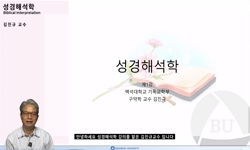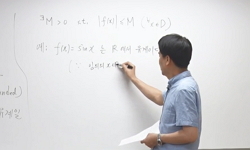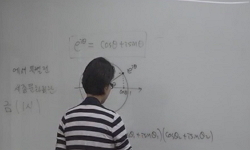누군가를 순교자로 지칭하는 행위는 특정한 죽음에 대한 호명(呼名, naming) 혹은 표지(標識, labelling)이다. 죽은 자는 말이 없기 때문에 ‘순교자’ 칭호는 필연적으로 사후(事後)에 산 자에 의...
http://chineseinput.net/에서 pinyin(병음)방식으로 중국어를 변환할 수 있습니다.
변환된 중국어를 복사하여 사용하시면 됩니다.
- 中文 을 입력하시려면 zhongwen을 입력하시고 space를누르시면됩니다.
- 北京 을 입력하시려면 beijing을 입력하시고 space를 누르시면 됩니다.
https://www.riss.kr/link?id=A99965584
- 저자
- 발행기관
- 학술지명
- 권호사항
-
발행연도
2014
-
작성언어
Korean
-
주제어
순교(자) ; 순교담론 ; 패러다임 ; 죽음사건 ; 기억 ; 해석 ; 힘 ; 내러티브 ; Martyr(dom) ; Discourse of martyrdom ; Paradigm ; Death-event ; Memory ; Interpretation ; Power ; Narrative
-
등재정보
KCI등재
-
자료형태
학술저널
-
수록면
115-145(31쪽)
-
KCI 피인용횟수
9
- DOI식별코드
- 제공처
-
0
상세조회 -
0
다운로드
부가정보
국문 초록 (Abstract)
누군가를 순교자로 지칭하는 행위는 특정한 죽음에 대한 호명(呼名, naming) 혹은 표지(標識, labelling)이다. 죽은 자는 말이 없기 때문에 ‘순교자’ 칭호는 필연적으로 사후(事後)에 산 자에 의해 주어진다. 따라서 순교자 추서(追敍, making)는 호명자의 현재 목적에 따라 다양한 형태의 죽음 가운데서 특정한 죽음을 선택하는 행위이며, 나아가 그 죽음을 합법화하고 기념하여 의미를 부여하는 행위이다. 특정 죽음에 대한 이런 호명과 표지의 행위는 죽음의 선택 그리고 해석과 관련된 힘을 수반한다. 정확히 말해서, 특정 죽음을 합법적 순교로 호명하는 사회적 행위로서의 순교는 산 자의 특정 공동체가 그들의 지배 이데올로기를 형성하고 유지하기 위해 의도된 목적을 가지고 만든 담론의 일부분이다. 순교자 추서의 이와 같은 담론적 특성을 염두에 두고, 본 연구는 죽음사건, 기억, 해석, 힘 등 ‘추서’의 구조(mechanism)와 관련된 주제들을 면밀히 검토한다. 순교자 추서의 과정에서 드러나는 이 주제들의 상호작용을 본 소고에서는 ‘순교자 추서의 패러다임’으로 제시한다.
순교자 추서의 패러다임은 세 요소(죽음사건, 기억, 해석)로 구성된 두 행위의 결합을 나타낸다. 이 두 행위는 담론의 분석을 위해서는 구분되어야 하지만, 실제로 추서의 과정에서는 불가분의 관계이며 상호의존적이다. 첫 번째 행위는 개인의 신앙 고백 혹은 선포로 인한 죽음의 선택의 행위이며, 두 번째 행위는 그 죽음을 순교로 지정하는 사회적 행위이다. 전자를 개인의 과거 신앙고백 행위로 인한 죽음사건으로 본다면, 후자는 현재 공동체의 정황에 따른 사회-정치적 죽음해석의 행위가 된다. 첫 번째 행위(죽음사건)는 특정 이데올로기적 입장의 반영과 강화로 형성되고 과거 죽음사건의 기본적 이미지를 담고 있는 기억에 의해 두 번째 행위(죽음에 대한 해석)로 전이 된다. 또한 순교자 추서의 구조에서 각각의 행위는 죽음사건 자체와 그 사건의 선택, 그에 대한 기억의 수집, 그리고 순교자 추서, 재(再)추서, 반(反)추서의 해석학적 행위와 관련된 본질적 힘의 대결을 수반한다.
순교자가 기념하는 해석 행위에 의해 최종적 지칭이 이루어진다 할지라도 우리는 이 패러다임에서 순교자 추서 과정을 이해하기 위해 두 가지 이론을 제시한다. 하나는 역사적 사건으로서, 이론적으로 그것은 과거의 사건으로부터 시작되나 실제적으로는 내러티브에 더 가깝다고 보는 입장이다. 다른 하나는 순교자 추서과정은 추서자의 이데올로기적 의도나 목적으로부터 시작하기 때문에 그 순서가 해석-사건의 역순으로 진행된다는 입장이다. 본 소고에서 순교자 추서의 패러다임에 나타나는 이 두 이론을 상보적 관계로 볼 때 우리는 순교자 추서 과정의 첫 단계로서 죽음사건의 실체를 재구성할 수 있다고 주장한다. 비록 죽음사건의 실체를 완벽하게 재현할 수 없다 할지라도 순교구조의 핵심에 위치하는 사건의 실체에 대한 조사와 재구성을 통해, 순교담론이 담론에 불가피하게 작동하고 있는 지배적 힘에 의해 오용 혹은 남용되는 것을 방지할 수 있다고 본다. 실제로 순교자 추서에 수반되는 두 행위 중 개인의 죽음사건이 없이는 거짓 순교가 될 뿐이고, 동시에 한 사회가 특정 죽음을 의미 있게 기억하는 의도된 해석의 사회적 행위가 없이는 순교자가 추서될 수 없다는 사실은 명백하다.
다국어 초록 (Multilingual Abstract)
To call someone a martyr is an act of ‘naming’ or ‘labelling’ a death. As the dead no longer speak, the title of martyr for the dead must be given posthumously by the living. To designate a death as martyrdom therefore entails selecting a spec...
To call someone a martyr is an act of ‘naming’ or ‘labelling’ a death. As the dead no longer speak, the title of martyr for the dead must be given posthumously by the living. To designate a death as martyrdom therefore entails selecting a specific death among various types of death and then attributing that meaning to the death through legitimating and commemorating the death in accordance with the namers’ present purpose. This act of naming or labelling a death inevitably involves power, that of selection and interpretation. Precisely, martyrdom as a social act of calling a specific death as a legitimated martyrdom is part of making the discourse by the living groups’ predetermined purpose to construct and sustain their ruling ideologies through accepted means. Having set out the discursive figures of martyr-making, this paper has closely examined the ‘making’ mechanism of martyrdom focusing on the relevant issues: death-event, memory, interpretation, and power. The interaction of these issues in the process of making martyrs has been termed as a ‘Paradigm of Martyr-Making’ in this paper.
The paradigm of martyr-making requires two basic acts made of three elements (death-event, memory, and interpretation) which are inseparable and interdependent in practice but should be distinguished from each other for analysis. One is a person’s act of confessing or proclaiming faith by choosing death rather than evading it. The other is the social act of designating the death as martyrdom. While the former act can be conceived as a death-event caused by an individual’s belief-profession behaviour in the past, the latter can be regarded as a socio-political act of interpreting the death in the present community’s context. The first act (Death-event) transits to the second act (Interpretation of the death) through memory in which the basic image of a past death-event is established by articulating and reinforcing a particular ideological stance. In the mechanism of martyr-making, each act inherently involves power contests over the death-event, the selection of that event and not others, the collection of relevant memories, and the hermeneutical activity of making, remaking or unmaking martyrs.
Though a martyr is designated finally by the commemorative interpretational act, we have evoked two theories in the paradigm to comprehend martyr-making. Theoretically with a historical event, one starts from the past event but in practice it is more a narrative, while the other begins from the ideological intentions or aims of the makers and works backwards. The former claims the final interpretation should be come from the past event itself, however, the latter argues that the past event is only shaped or reshaped by intended interpretations in the particular context. This paper has argued that when we place two theories of the martyr-making process in complementary relationship, we can draw a picture of the reality of death-event as the primary step of the martyr-making process, which takes the central position in the structure of martyrdom, though we never gain its perfect figure. By doing so, we may prevent the discourse of martyrdom from being abused or misused by the dominant power inevitably involved in the discourse. There may have been a pseudo-martyrdom without the individual’s death-event, yet at the same time it is impossible to be a martyr without the intended interpretation of the death by a society remembering the death meaningfully.
목차 (Table of Contents)
- Ⅰ. 머리말
- Ⅱ. 순교 연구의 출발점들
- Ⅲ. 순교 연구의 명제들
- Ⅳ. 순교담론의 패러다임
- Ⅴ. 맺음말
- Ⅰ. 머리말
- Ⅱ. 순교 연구의 출발점들
- Ⅲ. 순교 연구의 명제들
- Ⅳ. 순교담론의 패러다임
- Ⅴ. 맺음말
- 참고문헌
- 한글초록
- Abstract
참고문헌 (Reference)
1 강인철, "한국의 개신교와 반공주의" 중심 2007
2 Jones, George H, "한국교회 형성사" 홍성사 2013
3 오문환, "평양양난한화(平壤洋亂閑話) 1․2․3"
4 오문환, "조선기독교의 일분수령인 평양양난" 광명서관 1926
5 한규무, "제너럴셔먼호 사건과 토마스의 ‘순교’ 문제 검토" (8) : 1998
6 Crews, Rowan D. Jr, "에큐메니칼 운동과 신학사전" 한국기독교교회협의회 2002
7 주교회의 시복시성 주교특별위원회, "시복 시성 절차 해설" 한국천주교중앙위원회 2011
8 김영희, "나는 그리스도인입니다: 초대교회 순교록" 익투스 2010
9 이상규, "구름 같은 증인들의 빛과 그림자: 한국교회 순교에 대한 신학적 성찰" 도서출판창과현 2009
10 최상도, "구름 같은 증인들의 빛과 그림자: 한국교회 순교에 대한 신학적 성찰" 도서출판 창과현 2009
1 강인철, "한국의 개신교와 반공주의" 중심 2007
2 Jones, George H, "한국교회 형성사" 홍성사 2013
3 오문환, "평양양난한화(平壤洋亂閑話) 1․2․3"
4 오문환, "조선기독교의 일분수령인 평양양난" 광명서관 1926
5 한규무, "제너럴셔먼호 사건과 토마스의 ‘순교’ 문제 검토" (8) : 1998
6 Crews, Rowan D. Jr, "에큐메니칼 운동과 신학사전" 한국기독교교회협의회 2002
7 주교회의 시복시성 주교특별위원회, "시복 시성 절차 해설" 한국천주교중앙위원회 2011
8 김영희, "나는 그리스도인입니다: 초대교회 순교록" 익투스 2010
9 이상규, "구름 같은 증인들의 빛과 그림자: 한국교회 순교에 대한 신학적 성찰" 도서출판창과현 2009
10 최상도, "구름 같은 증인들의 빛과 그림자: 한국교회 순교에 대한 신학적 성찰" 도서출판 창과현 2009
11 Woodward, Kenneth L, "Who Do Not, and Why" Chatto & Windus 1990
12 Kiokleia, Kallistos, "What is Martyrdom" 5 : 1983
13 Strathmann, H, "Theological Dictionary of the New Testament, vol. 4" Eerdmans 1974
14 Chandler, Andrew, "The Terrible Alternative: Christian Martyrdom in the Twentieth Century" Cassell 1998
15 Dickens, A. G, "The Reformation in Historical Thought" Basil Blackwell 1985
16 Seeley, D, "The Noble Death: Graeco-Roman Martyrology and Paul’s Concept of Salvation" JSOT Press 1990
17 Halbwachs, "The Collective Memory" Harper & Row 1980
18 Salisbury, Joyce E, "The Blood of Martyrs: Unintended Consequences of Ancient Violence" Routledge 2004
19 Musurillo, Herbert, "The Acts of the Christian Martyrs" Oxford University Press 1972
20 WCC, "Sharing in One Hope: Reports and Documents from the Meeting of the Faith and Order Commission" WCC, Commission on Faith and Order 1978
21 Gregory, Brad S, "Salvation at Stake: Christian Martyrdom in Early Modern Europe" Harvard University Press 1999
22 Cormack, Margaret, "Sacrificing the Self: Perspectives on Martyrdom and Religion" Oxford University Press 2002
23 Assmann, Jan, "Religion and Cultural Memory, Rodney Livingstone, trans" Stanford University Press 2006
24 Middleton, Paul, "Radical Martyrdom and Cosmic Conflict in Early Christianity" T&T Clark 2006
25 Choi, Sangdo, "Placing and Displacing Martyrdom: Martyr-Making in the Protestant Church in Korea" The University of Edinburgh 2012
26 Rahner, Karl, "On the Theology of Death" Herder and Herder 1972
27 Halbwachs, Maurice, "On Collective Memory" University of Chicago Press 1992
28 Weiner, E., "Martyr’s Conviction: A Sociological Analysis" Scholars Press 1990
29 Rosoux, Valérie, "Martyrdom: The Psychology, Theology, and Politics of Self-Sacrifice" Praeger 2004
30 Bowersock, G. W, "Martyrdom and Rome" Cambridge University Press 1995
31 van Henten, Jan Willem, "Martyrdom and Noble Death: Selected Texts from Graeco-Roman, Jewish and Christian Antiquity" Routledge 2002
32 Castelli, Elizabeth A, "Martyrdom and Memory: Early Christian Culture Making" Columbia University Press 2004
33 Boff, Leonardo, "Martyrdom Today" Seabury; Edinburgh: T. & T. Clark 1983
34 Grig, Lucy, "Making Martyrs in Late Antiquity" Gerald Duckworth 2004
35 Trites, Allison A, "Ma,rtuj and Martyrdom in the Apocalypse: A Semantic Study" 15 : 1973
36 Connerton, Paul, "How Society Remember" Cambridge University Press 1989
37 Cubitt, Geoffery, "History and Memory" Manchester University Press 2007
38 Hirsch, Herbert, "Genocide and the Politics of Memory: Studying Death to Preserve Life" The University of North Carolina Press 1995
39 Kolb, Robert, "For all the Saints: Changing Perceptions of Martyrdom and Sainthood in the Lutheran Reformation" Mercer University Press 1987
40 Boyarin, Daniel, "Dying for God: Martyrdom and the Making of Christianity and Judaism" Stanford University Press 1999
41 von Compenhausen, H. F, "Die Idee des Martyriums in der alten Kirche" Vandenhoech & Ruprecht 1936
42 Assmann, Jan, "Cultural Memory and Early Civilization: Writing, Remembrance, and Political Imagination" Cambridge University Press 2011
43 Kassimir, R, "Complex martyrs: Symbols and Catholic Church formation and political differentiation in Uganda" 90 (90): 1991
44 Ste. Croix, "Christian Persecution, Martyrdom, and Orthodoxy" Oxford University Press 2006
45 Slane, Craig J, "Bonhoeffer as Martyr: Social Responsibility and Modern Christian Commitment" Brazos 2004
46 White, R. E. O, "Biblical Ethics" Gracewing 1994
47 Droge, Arthur J, "A Noble Death: Suicide and Martyrdom among Christians and Jews in Antiquity" HarperSanFrancisco 1992
동일학술지(권/호) 다른 논문
-
- 한국기독교역사연구소
- 민관홍(Min Kwan-Hong)
- 2014
- KCI등재
-
- 한국기독교역사연구소
- 연규홍(Yeon Kyu-Hong)
- 2014
- KCI등재
-
- 한국기독교역사연구소
- 정병준(Chung Byung-Joon)
- 2014
- KCI등재
-
- 한국기독교역사연구소
- 박형우(Park Hyoung-Woo)
- 2014
- KCI등재
분석정보
인용정보 인용지수 설명보기
학술지 이력
| 연월일 | 이력구분 | 이력상세 | 등재구분 |
|---|---|---|---|
| 2026 | 평가예정 | 재인증평가 신청대상 (재인증) | |
| 2020-01-01 | 평가 | 등재학술지 유지 (재인증) |  |
| 2017-01-01 | 평가 | 등재학술지 유지 (계속평가) |  |
| 2015-04-21 | 학회명변경 | 영문명 : The Society For Korean Church History -> The Society of the History of Christianity in Korea |  |
| 2013-01-01 | 평가 | 등재 1차 FAIL (등재유지) |  |
| 2010-01-01 | 평가 | 등재학술지 유지 (등재유지) |  |
| 2005-01-01 | 평가 | 등재학술지 선정 (등재후보2차) |  |
| 2004-01-01 | 평가 | 등재후보 1차 PASS (등재후보1차) |  |
| 2003-01-01 | 평가 | 등재후보학술지 선정 (신규평가) |  |
학술지 인용정보
| 기준연도 | WOS-KCI 통합IF(2년) | KCIF(2년) | KCIF(3년) |
|---|---|---|---|
| 2016 | 0.43 | 0.43 | 0.57 |
| KCIF(4년) | KCIF(5년) | 중심성지수(3년) | 즉시성지수 |
| 0.6 | 0.64 | 0.945 | 0.13 |





 KCI
KCI DBpia
DBpia






